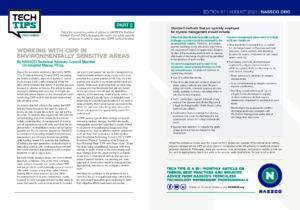WORKING W/ CIPP IN ENVIRONMENTALLY SENSITIVE AREAS
This is the second in a series of articles by NASSCO’s Technical Advisory Council (TAC) discussing the health and safety aspects of styrene in cured-in-place pipe (CIPP) method renewal. While the initial article reviewed the history of styrene use and focused on styrene emissions, this article focuses on project planning and execution to mitigate potential deleterious impacts to the environment when conducting CIPP work in and around environmentally sensitive areas.
